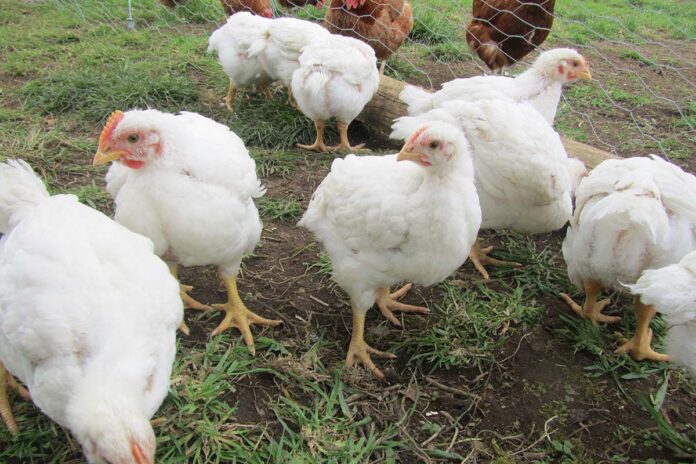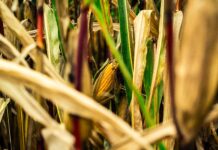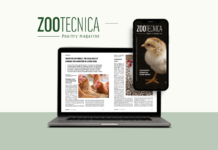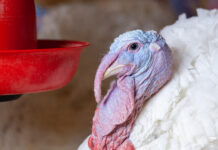
There is some evidence that commercial meat chickens prefer to access the range through ‘favoured’ pop-holes; however what makes pop-holes attractive or aversive is unknown.
Therefore, this text aimed to:
- determine the most aversive stimuli associated with pop-holes and
- identify the most effective artificial structure to minimise aversion. We hypothesised that the simulation of wind, UV light and high light intensity at an artificial pop-hole would be aversive for meat chickens and predicted that barriers, shade cloth and tunnel structures would reduce aversion and increase the transition of birds through pop-holes.
A one hundred 14-day old mixed sex Cobb 500TM meat chickens was used. The birds were trained to walk through an artificial pop-hole (60×40 cm) to obtain live mealworms, referred to hereafter as the learning/habituation round. Chickens were placed in a start box (1700×1700×800 mm) with visual access to an adjacent area (1700×1700×500 mm) with a green bowl containing five mealworms accessible via the artificial pop-hole. The time taken to exit the pop-hole and reach the bowl was recorded. If a chicken did not access the bowl of mealworms within eight minutes the chicken was carried to the bowl and left with the assessor out of sight for 2-3 minutes or until the meal worms were consumed.
The learning/habitation round was repeated three times and any chicken that did not cross the pop-hole was excluded from further testing. Each chicken was randomly allocated to one of four structural treatments groups; barrier, tunnel, tall shade or control treatment. The control group had no artificial structure surrounding the pop-hole. The barrier treatment included two wooden structures (400×400×2mm) extending out from the pop-hole wall and a Perspex barrier (800x25mmx2mm) positioned parallel 0.5m from the pophole. The tunnel treatment was an 800 mm long (600 mm high) perpendicular tunnel extending from the pop-hole into the arena, covered in shade cloth (50–90 % UV). The tall shade treatment was a wooden rectangular structure (800×700×750 mm) covered with 70% UV shade cloth. After three rounds of learning/habituation aversive stimuli were added; either simulated wind at a speed of 3.0 m/s (Dynabreeze 600 mm industrial drum fan., NZ), UV light (2×UV 200 UV light globes, Exo Terra, CA) or high light intensity (LED light, 54,000 lux at chicken height, Hi-Bay 200W, Cetnaj, NSW). Each chicken was exposed to each aversive stimulus individually and all stimuli together once in a randomly assigned order over four consecutive days. The time taken to step, cross through the pop-hole and to peck the mealworm bowl was recorded. Data were analysed with a repeated measure mixed model.
Preliminary analysis showed that there was no interaction between pop-hole structure and aversive stimuli (p=0.705). However, chickens took longer to pass through the pop-hole when provided with a barrier structure (103±20.7 s) compared to chickens without a structure (25.1±21.5 s; p=0.037) or tunnel (26.4±23.9 s p=0.041) and when high light intensity was applied (intensity 113.1±21.4 s) compared to wind (77.9±21.3 s; p=0.11).
This paper provides some insight into the perception of pop-hole environments by meat chickens and the aversive stimuli that may prevent or slow transitions from shed to range environments.
From the Proceedings of the Australian Poultry Science Association – 2021
















